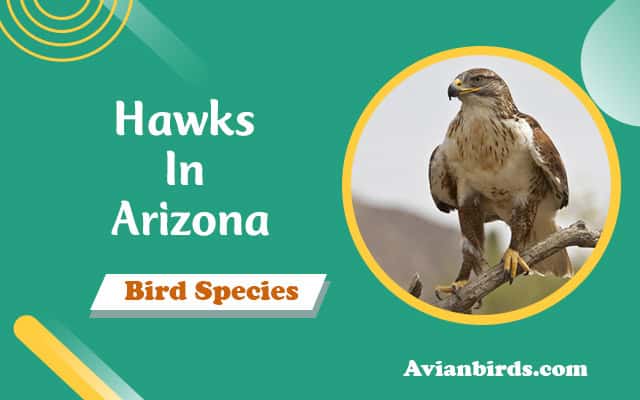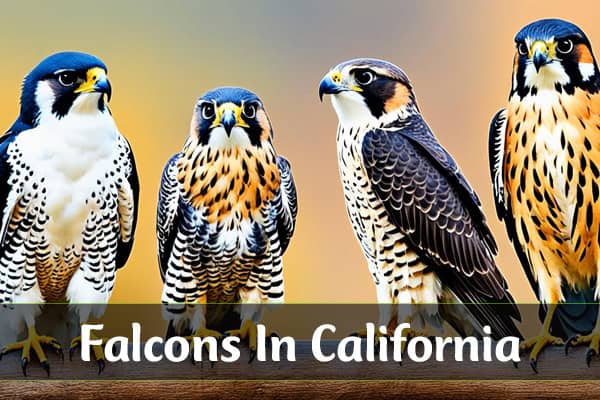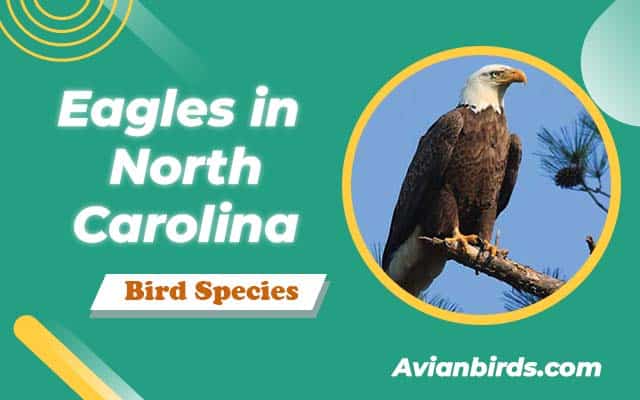Small Birds with Long Legs (10 Species With Pictures)
Did you know some tiny birds have legs almost as long as their bodies? This is true for many small birds with long legs, found in wetlands and marshes. Their long legs help them move easily in water, making them great for finding food and living in wet areas.
We’re going to look at the amazing world of birds with long legs. These birds have special traits that help them survive in different places. They move beautifully and look striking, playing a big part in their ecosystems. Let’s learn more about how long legs help these birds and the species that have them.
The Fascination with Birds and Their Long Legs
Birds stand out because of their long legs. These legs are crucial for their survival, helping them live in many places. They are not just for looks; they help birds survive and connect with their world.
Importance of Long Legs in Avian Adaptations
Long legs are key for birds. They help with many things, like:
- Wading: They let birds move easily in shallow water, helping them find food while staying above the water.
- Balance: They help with balance, especially on uneven ground or when looking for food.
- Speed: In some birds, longer legs mean they can run faster, helping them escape from predators.
- Displays: Birds use their long legs in special dances to show off to other birds.
How Long Legs Aid in Habitat Navigation
Long legs help birds move around their homes. They make it easier to move over different lands. The benefits are:
- Wading Depth: Long legs let birds go deeper into the water without sinking.
- Foraging Efficiency: They can look for food over a bigger area, which helps them find more food.
- Adaptation to Environments: In places from wetlands to grasslands, long legs help birds move through different environments.
Top 10 Species of Small Birds with Long Legs
In the world of birds, many small birds with long legs catch our eye. They are not just beautiful but also play key roles in their ecosystems. Here’s a list of these amazing birds:
| Species Name | Habitat | Distinctive Features | Behavior |
|---|---|---|---|
| American Avocet | Wetlands, Marshes | Curved bill, striking black-and-white plumage | Foraging in shallow waters |
| Black-winged Stilt | Shallows, Lagoons | Long legs, black wings, pink body | Feeding in groups |
| Marsh Sandpiper | Wetlands, Mudflats | Long, slender legs, greenish bill | Inhabits quiet wetlands |
| Greater Yellowlegs | Coastal Areas | Long bill, spotted plumage | Notable for loud calls |
| Wood Sandpiper | Wet Grasslands | Greenish-brown food, long legs | Acrobatic foragers in mud |
| Common Greenshank | Marshes, Estuaries | Long legs, elegant shape | Watchful feeding behavior |
| Redshank | Coastal Wetlands | Bright red legs, streaked body | Vocal and social species |
| Little Ringed Plover | Shorelines, Sandbanks | Circular black collar, short bill | Quick movements along the shore |
| Sanderling | Beaches, Sandy Dunes | Small size, white plumage | Active runner on sandy shores |
| Killdeer | Open Fields, Shores | Distinctive double black necklace | Defensive behavior with loud calls |
These small birds with long legs show how adaptable birds can be in different places. They move through shallow waters or forage on sandy shores with ease. Their long legs help them survive, making them interesting for bird lovers and casual watchers alike.
1. Whooping Crane
- Scientific Name: Grus americana
- Size: 140–160 cm (55–63 in) in height
- Weight: 4.5–7.7 kg (10–17 lb)
- Lifespan: 20–30 years in the wild
- Diet: Aquatic invertebrates, plants, and small mammals
The whooping crane is a bird of great beauty and size. It is known for its white feathers and long legs. This bird is one of the tallest flying birds in North America, reaching five feet tall with a seven and a half foot wingspan.
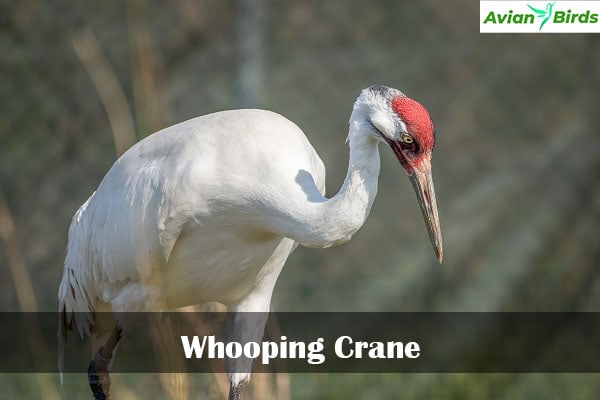
These cranes live in wetlands, marshes, and shallow coastal areas. They need these places for food and to nest. They eat crustaceans, small fish, and plants, hunting in the water with their long legs.
This bird faces a big fight for survival. Humans and environmental changes have destroyed much of their homes. But, efforts to save them are underway, like restoring habitats and breeding programs. Despite the odds, the whooping crane’s strength and beauty give us hope for its future.
2. American Flamingo
- Scientific Name: Phoenicopterus ruber
- Size: 100–150 cm (39–59 in) in height
- Weight: 3.5–4.5 kg (7.7–9.9 lb)
- Lifespan: 20–30 years in the wild
- Diet: Algae, crustaceans, and small invertebrates
The American Flamingo is a bird with a bright pink color and special traits. Its pink feathers show its diet and health. It stands out with its long legs, which help it live in shallow water.
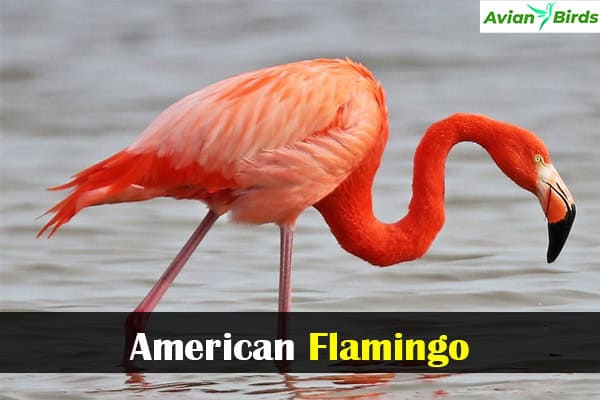
Distinctive Features of the American Flamingo
The American Flamingo has unique traits that tell us about its life and habits. Its long legs let it walk and search for food in deep water. some key features of this bird:
- The iconic pink plumage is a result of their diet, which mainly consists of algae and small crustaceans.
- Flamingos are known for their social nature, often seen in large flocks that engage in synchronized movements.
- Their unique feeding habits involve filtering food from the water using their specialized beaks.
These features show how the American Flamingo lives and flourishes in its home. Its special traits highlight the beauty of evolution and how species fit into their environments.
3. Roseate Spoonbill
- Scientific Name: Platalea ajaja
- Size: 70–80 cm (28–31 in) in height
- Weight: 1.3–2.3 kg (2.9–5.1 lb)
- Lifespan: 10–20 years in the wild
- Diet: Aquatic invertebrates and small fish
The roseate spoonbill is a stunning pink wading bird found in the southeastern United States. Its bright colors and unique bill shape make it stand out. It lives in shallow waters, moving through marshes and estuaries with ease.

This bird has a special way of finding food called “skimming.” It moves its bill through the water to catch fish, crustaceans, and plants. This shows how well it can adapt and survive in its habitat.
The roseate spoonbill’s long legs are key to its survival. They help it feed and move around. Watching these birds, we see how their looks and abilities help them live in different places.
4. Scarlet Ibis
- Scientific Name: Eudocimus ruber
- Size: 65–75 cm (26–30 in) in length
- Weight: 0.7–1.5 kg (1.5–3.3 lb)
- Lifespan: 16 years in the wild
- Diet: Crustaceans, insects, and small fish
The Scarlet Ibis is known for its bright red feathers. It’s a fascinating bird that lives in groups. Watching it shows us how it fits into its home and how it finds food.

Behavioral Traits of the Scarlet Ibis
Scarlet Ibis loves to live with others. This helps them find food better. They have long legs that let them walk in shallow water to look for food. They eat things like crustaceans and small fish.
- Social Feeding: These birds often eat together in groups. This helps them find food more easily.
- Nesting Habits: They build their nests in trees close to water. This shows they like safe places to live.
- Mating Displays: During mating, males show off with special dances. They use their bright colors to attract females.
Scarlet Ibises behave in ways that match their surroundings. Their long legs are important for finding food and socializing. They use these legs for many things in their daily lives.
5. Hawaiian Stilt
- Scientific Name: Himantopus mexicanus
- Size: 30–36 cm (12–14 in) in height
- Weight: 2.5–4.5 kg (5.5–9.9 lb)
- Lifespan: 10–20 years in the wild
- Diet: Insects, crustaceans, and plant material
The Hawaiian stilt, also called Aeʻo, is a key symbol of Hawaii’s rich wildlife. These birds live in the wetlands, thanks to their long legs. These legs help them move through shallow water to find food.
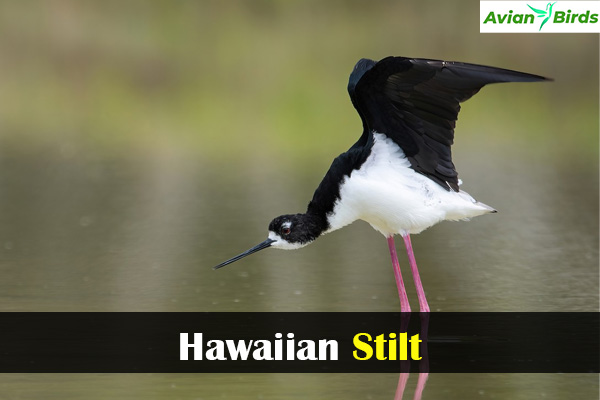
They eat insects, crustaceans, and plants by digging in the mud. This shows how well they’ve adapted to their home.
The Hawaiian stilt stands out with its black and white feathers. These colors help it blend in with the wetlands. Its long legs are not just for looks; they help it move through the delicate wetland areas.
But, these birds face big challenges. Humans, climate change, and invasive species threaten their home. That’s why saving the Hawaiian stilt is crucial.
| Feature | Description |
|---|---|
| Scientific Name | Himantopus mexicanus knudseni |
| Habitat | Wetland habitats in Hawaii |
| Diet | Insects, crustaceans, and plant matter |
| Conservation Status | Endangered |
| Unique Adaptation | Wading long legs for foraging |
6. Water Thick-knee
- Scientific Name: Burhinus vermiculatus
- Size: 38–43 cm (15–17 in) in length
- Weight: 0.5–1 kg (1.1–2.2 lb)
- Lifespan: 10–15 years in the wild
- Diet: Insects, crustaceans, and small vertebrates
The Water Thick-knee is a fascinating bird with special traits for living in water. It has unique features that help it survive in wet places. These traits make it stand out among thick-knee birds.
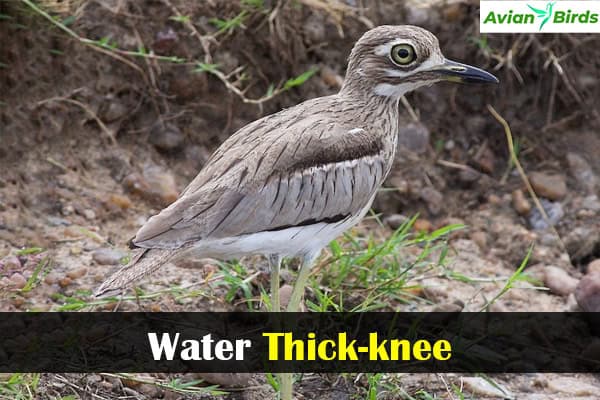
Unique Adaptations of the Water Thick-knee
These birds have long legs that let them move easily in shallow water. They can stay above the water while searching for food or avoiding predators. This is key to their survival.
They are most active at night, which helps them avoid other birds and predators. This unique behavior lets them find food without much competition. They mainly eat insects found near the water.
In summary, the Water Thick-knee uses its long legs and night-time habits to thrive in the water. Learning about these special traits helps us appreciate the amazing diversity in birds.
7. Wattled Jacana
- Scientific Name: Jacana jacana
- Size: 25–30 cm (9.8–11.8 in) in length
- Weight: 200–300 g (7–11 oz)
- Lifespan: 5–10 years in the wild
- Diet: Insects, seeds, and aquatic plants
The Wattled Jacana catches our eye with its unique yellow wattle on its forehead. This special feature, along with its long toes, helps it move through its habitat easily. These traits are key to its ability to walk on floating plants, making it stand out among wading birds.
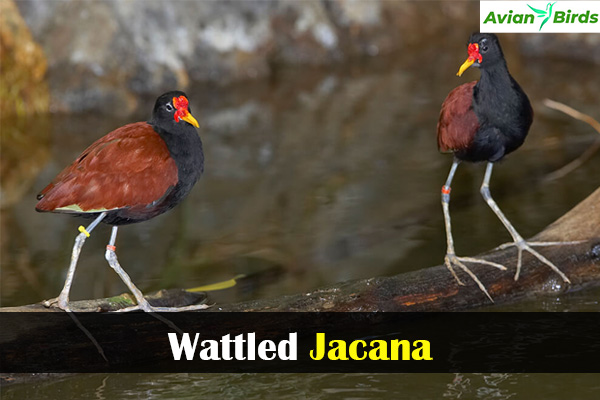
The Wattled Jacana is known for its remarkable legs. These long legs help it move over water plants and find insects and seeds in dense foliage. This shows how the bird’s body is adapted to its dynamic home, highlighting the link between its looks and how it lives.
- Long legs allow for agility on unstable surfaces.
- Colorful wattle aids in attraction during mating rituals.
- Capable of quick and evasive maneuvers to escape predators.
This species lives in complex ecosystems with water and plants. Exploring these habitats shows how the Wattled Jacana survives in tough conditions. Its presence shows the beauty of bird diversity and the complexity of life in water ecosystems.
| Characteristic | Description |
|---|---|
| Wattle | Bright yellow structure on the forehead |
| Leg Length | Long limbs aiding in walking on vegetation |
| Feeding Behavior | Forages for insects and seeds in foliage |
| Habitat | Wetlands, marshes, and areas with floating plants |
The Wattled Jacana’s bright presence in its home shows why we must protect these places for future birds. Learning about its special traits helps us value bird life and the balance of nature.
8. Greater Yellowlegs
- Scientific Name: Tringa melanoleuca
- Size: 30–38 cm (12–15 in) in length
- Weight: 140–300 g (4.9–10.6 oz)
- Lifespan: 10–20 years in the wild
- Diet: Invertebrates, small fish, and amphibians
The Greater Yellowlegs is a standout among wading birds because of its unique feeding habits. It has long legs and an elegant stance. It moves through wetlands and shallow lakes with great skill.
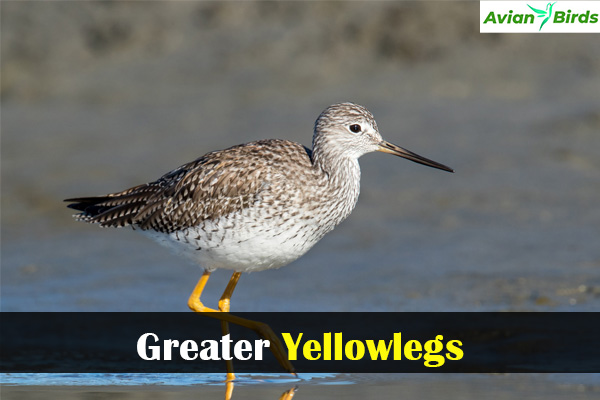
Feeding Habits of the Greater Yellowlegs
We see the Greater Yellowlegs in many aquatic places, reaching deep waters with ease. It uses its height to find food in the mud. It eats invertebrates, small fish, and amphibians. It can live in both fresh and salty waters.
When we watch these birds, we notice how they hunt:
- Wading Depth: Greater Yellowlegs can go deeper in the water than many other birds, helping them find more food.
- Visual Acuity: They have great eyesight, which helps them see prey from far away.
- Active foraging: They forage actively, moving through the water quickly in a methodical way.
- Seasonal Variance: Their eating habits change with the seasons and where they live.
9. Secretary Bird
- Scientific Name: Sagittarius serpentarius
- Size: 80–100 cm (31–39 in) in height
- Weight: 2–4 kg (4.4–8.8 lb)
- Lifespan: 10–20 years in the wild
- Diet: Snakes, insects, and small mammals
The Secretary Bird is a standout among long-legged raptors. It has a unique look and plays a key role in its ecosystem. These birds live in savannahs and grasslands, using their long legs to hunt effectively. They mainly eat snakes and small mammals, showing great agility in their hunts.

Observing Secretary Birds shows their detailed hunting methods. They sneak up on their prey and strike quickly. Their long legs help them chase down prey and move through dense vegetation, making them more visible and agile.
| Characteristic | Details |
|---|---|
| Habitat | Savannahs and grasslands |
| Diet | Snakes, small mammals, and insects |
| Height | About 3 to 4 feet |
| Wingspan | Up to 7.5 feet |
| Behavior | Hunts solo or in pairs, often using a specific hunting technique involving foot stomping to dislodge snakes |
Seeing a Secretary Bird in the wild gives us a glimpse into their life. They move elegantly and hunt actively, showing how they adapt and survive. These birds are a true marvel of nature.
10. Common Snipe
- Scientific Name: Gallinago gallinago
- Size: 25–30 cm (9.8–11.8 in) in length
- Weight: 100–200 g (3.5–7.1 oz)
- Lifespan: 5–10 years in the wild
- Diet: Insects, worms, and aquatic invertebrates
The Common Snipe is a bird with long legs that blends well into wetland areas. It’s known for its amazing ability to hide in its surroundings. Let’s look at how its body and behavior help it survive.
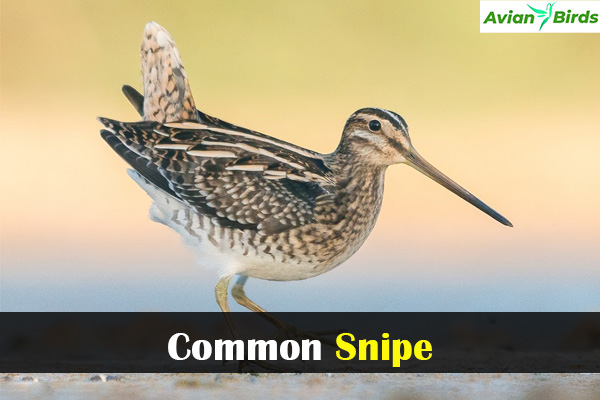
This bird is great at wading in shallow waters to find food. Its long legs let it move through the water easily. It uses these legs to dig into the mud for food like worms and insects. This shows how skilled and patient these birds are.
The Common Snipe also has special camouflage. Its feathers look like the earth, helping it hide from predators and prey. It moves quietly, making it hard to spot while hunting.
Its long legs help in more ways than one. They’re useful for moving around in wet places. They also help in showing off during mating and building nests. Males do amazing aerial dances to show off their skills to females.
To sum up, the Common Snipe shows how wading birds adapt to their environments. Its wading, hiding, and mating habits make it successful in different places.
| Feature | Details |
|---|---|
| Habitat | Wetlands, marshes, and ditches |
| Feeding Behavior | Wades through shallow waters probing for invertebrates |
| Camouflage | Mottled plumage that blends with the environment |
| Breeding Display | Aerial displays to attract mates |
Check Our Previous Articles:
| Red Birds in Florida |
| Small Birds With Long Necks |
| Small Green Birds in Florida |
| Baby Mourning Doves |
| Red Sparrow Bird |
Conclusion
In this article, we looked into small birds with long legs, like cranes and flamingos. These birds have special features that help them live in their homes. Their long legs are key to finding food and moving around safely.
Long legs help these birds live in different places, from wetlands to the coast. They make it easier for them to move, find food, and stay safe. Thinking about it, we see how important these birds are for nature’s balance.
If you’re interested, there’s more to learn about these small birds with long legs. Seeing them in nature shows us how life is connected. Let’s keep enjoying and protecting these amazing creatures on our planet.


